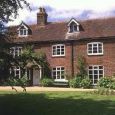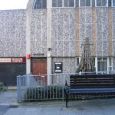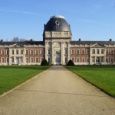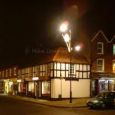Stevenage
Advertisement
By car
The A1(M) motorway is the most common road used to get into the town and it runs along the western border of the town, although planned future development of Stevenage may breach this barrier and continue on the other side. The A1(M) stretches 409 miles from London to Edinburgh, and roughly follows the path of the famous and historic Great North Road. The other major road connecting Stevenage to the surrounding area is the A602 which connects the town to the A10 and Ware to the Southeast, and Hitchin to the Northwest.
By train
There is one good sized railway station in the centre of Stevenage. The railway station is on Lytton Way in the town centre of Stevenage. The line served is the GNER King's Cross Main Line, which is the main railway line in the UK. Major stops include: King's Cross, and. The station is served by National Express East Coast, Hull Trains, and First Capital Connect railway companies.
By plane
The nearest airports are London Luton Airport (about 10 miles west of Stevenage, easily accessible by the A505 via Hitchin, or bus 101), and London Stansted Airport (about 30 miles to the east of Stevenage, accessible by buses 700 and 777).
By bus
If you wish to travel by bus there is an abundance of bus stops, at least one on all main streets and one on some more minor streets. Stevenage is served by many bus companies such as: Intalink, Arriva (Arriva Shires & Essex), Centrebus, and Trustline. Stevenage Bus Station is on The Quadrant, off Danestrete, in the town centre. It is a very short walk from the Town Square.
By bike
Cycling is made very easy around Stevenage by the excellent Cycle Path Network. As well as lots of cycle paths there are footpaths everywhere and many pedestrianised streets.
Rooks Nest House
Weston Road, Stevenage & Forster Country. Forster Country is the name given to a relatively small area of countryside around Rooks Nest House and it is the last remaining bit of green belt land actually within Stevenage Borough. Rooks Nest was the inspiration for the famous writer EM Forster's Howard's End. EM Forster lived at Rooks Nest during his childhood years, in the late 19th century. The farmhouse is a beautiful old building on a quiet lane situated on the edge of the Old Town of Stevenage.
Stevenage Museum
St George's Way, M-Sa 10AM-5PM, Su 1PM-4PM, closed on Bank Holidays. Facilities: disabled toilet with baby changing, small coffee areas and gift shop. This small but fascinating museum is a real gem in Stevenage and acts as one of the few links between Stevenage's past and present. It tells the story of Stevenage before it was a new town, which is a time most know very little about and after it became a new town. It also has an archive of old photographs,
St Nicholas Church
Rectory Lane, St Nicholas Church is the ancient parish church of Stevenage. The present Norman church replaced a much simpler Saxon church in 1100 AD and like many Hertfordshire churches it is built predominantly of flint. The current Anglican parish of St Nicholas stretches across the north of the town, but there are eight other Anglish parishes in Stevenage, but only the one civil parish. Free but optional small donation.
The Manor House
Chells Lane. Manor House not open to public but the Lane is open all year all day. The Manor House is situated on a quiet lane which is an enclave of the Chells Manor housing estate. The secluded lane has a lovely duck pond, several nice houses, a few old cottages and the manor house itself. Chells Lane is a reminder that not that long ago Chells Manor was only a tiny hamlet in the middle of the countryside, not a housing estate that is home to 5-10,000 people.
Old Town Stevenage
Bank with plaque commemmorating Henry Trigg, 18c. farmer who died in 1720 and whose coffin was fixed to a beam here because he thought he would return to life after 30 years! His brothers watched over the coffin for 4 days in 1750 and then buried him! A replacement coffin was a tourist attraction in the pub into which the barn was converted.
January - March
September - November






